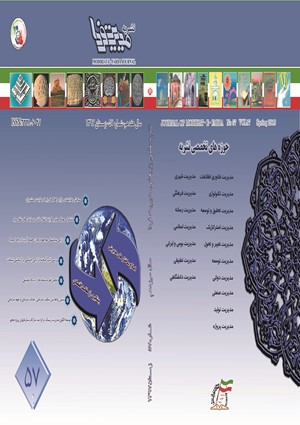Identifying the key factors affecting construction project portfolios combination in iran
Subject Areas :maryam ameli basiri 1 , Reza falsafi 2 , ehsan eshtehardian 3
1 -
2 -
3 - Tarbiat Modares University
Keywords: Project Portfolio Management Uncertainty Construction,
Abstract :
The current competitive and turbulent construction situation in Iran, which has a low degree of stability, has made project-based organizations encounter with a variety of unforeseen which can occur during the life of project portfolios and disrupt their performance. However, researchers in the field of portfolio management have more focused on portfolio defining processes, including project selection, prioritization and balancing, and have less considered the uncertainties which affect the portfolio expected results, eliminate strategic alignment of the portfolio components and also portolio combination optimization. In this study, by using the literature review and qualitative content analysis method, at first we explored these factors and prioritized them with the help of inferential statistics, and then identified the most important ones from the perspective of experts in this field Based on paretto analysis. According to the findings of the research, most important factors are: change in business strategy, change in the accessibility of portfolio capital and its financing, change in economic conditions, change in the profitability and financial value of the portfolio projects and change in political conditions.
تبریزي, م. (1393). تحلیل محتواي کیفی از منظر رویکردهاي قیاسی و استقرایی. فصلنامه علوم اجتماعی, 64.
ترنر، ر. (1394). راهنمای جامع مدیریت پروژه محور.
دانایی فرد، ح.، الوانی، س. و آذر، ع. (1388). روش شناسی پژوهش کمی در مدیریت: رویکردی جامع: انتشارات صفار-اشراقی.
سرمد، ز. (1378). روش های تحقیق در علوم رفتاری. تهران: انتشارات آگاه.
فلسفی، ر. (1389). بررسي مديريت سبد پروژهها در سازمان پروژهمحور مطالعه موردي: سازمان توسعه برق و شرکت مپنا. (کارشناسی ارشد مدیریت پروژه و ساخت)، دانشگاه تربیت مدرس.
فلسفی، ر.، صبحیه، م. (1391). استاندارد مدیریت پورتفولیو 2013/موسسه مدیریت پروژه(PMI) (ویرایش سوم). انتشارات آدینه.
مومنی، م. (1386). تحلیل آماری با اس پی اس اس. تهران: کتاب نو.
میرزایی, خ. (1388). پژوهش، پژوهشگری و پژوهشنامه نویسی: انتشارات جامعه شناسان.
Dvir, D., & Lechler, T. (2004). Plans are nothing, changing plans is everything: the impact of changes on project success. Research policy, 33(1), 1-15.
Englund, R. L., & Graham, R. J. (1999). From experience: linking projects to strategy. Journal of Product Innovation Management, 16(1), 52-64.
Engwall, M., & Jerbrant, A. (2003). The resource allocation syndrome: the prime challenge of multi-project management? International Journal of Project Management, 21(6), 403-409.
Hall, D. L., & Nauda, A. (1990). An interactive approach for selecting IR&D projects. Engineering Management, IEEE Transactions on, 37(2), 126-133.
Hällgren, M., & Maaninen-Olsson, E. (2005). Deviations, ambiguity and uncertainty in a project-intensive organization. Project Management Journal, 36(3), 17-26.
Iamratanakul, S., & Milosevic, D. Z. (2007). Using strategic fit for portfolio management. Paper presented at the Management of Engineering and Technology, Portland International Center for.
Jenner, S., & Kilford, C. (2011). Management of Portfolios: The Stationery Office.
Luehrman, T. A. (1998). Strategy as a portfolio of real options. harvard business review, 76, 89-101.
Martinsuo, M., & Lehtonen, P. (2009). Project autonomy in complex service development networks. International Journal of Managing Projects in Business, 2(2), 261-281.
Power, M. (2007). Organized Uncertainty Designing a World of Risk Management. Oxford University Press, Oxford (UK).
Ward, S., & Chapman, C. (2003). Transforming project risk management into project uncertainty management. International Journal of Project Management, 21(2), 97-105.


